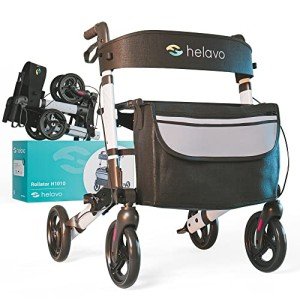10 Things We All Love About Mobility Aid
Mobility Aids for the Elderly: A Comprehensive Guide
As individuals age, mobility can end up being a considerable issue. Minimized strength, balance concerns, and other health conditions can make it difficult for elderly individuals to move freely and safely. Thankfully, various mobility aids are developed to enhance mobility and provide support to guarantee greater independence. This blog site post will check out the kinds of mobility help readily available for the elderly, their advantages, and essential factors to consider in choosing the ideal one.
Types of Mobility Aids for the Elderly
Mobility aids can significantly enhance a senior's quality of life, enabling them to perform day-to-day activities and preserve their self-reliance. Below is a table classifying some of the most typical mobility help together with their benefits.
Type of Mobility Aid
Description
Benefits
Walking sticks
A single walking stick that offers additional support and balance.
Offers stability, promotes an upright posture.
Walkers
A frame with four legs that provides maximum support and balance when walking.
Ideal for those with limited balance; enhances safety.
Rollators
A walker on wheels with a seat, hand brakes, and a storage bag.
Practical for brief breaks; increased mobility.
Wheelchairs
A chair mounted on wheels that requires either manual or electric propulsion.
For individuals with serious mobility constraints.
Scooters
Motorized mobility vehicles, typically utilized for longer distances.
Supplies self-reliance for outdoor activities.
Stair Lifts
A motorized chair that takes a trip up and down stairs.
Boosts home availability for multi-level homes.
Transfer Aids
Gadgets like transfer boards or slings that help move individuals from one place to another.
Promotes security during transfers and decreases falls.
Factors to consider in Choosing a Mobility Aid
Picking the ideal mobility aid depends upon numerous aspects, consisting of the individual's physical condition, living environment, and personal preferences. Below are some essential factors to consider:
Assessment of Mobility Needs:
- Consult with health care service providers to get an accurate evaluation of the individual's mobility level and specific restrictions.
Kind Of Aid Required:
- Consider whether a walking cane, walker, wheelchair, or another type of aid is most proper for the person.
Living Environment:
- Evaluate the home and surroundings. For example, those living in multi-story homes may benefit from stair lifts, while those in a smaller space might need a more compact solution.
User-Friendly Features:
- Look for features like adjustable heights, lightweight styles for ease of use, and storage compartments for convenience.
Expense and Insurance:
- Research readily available choices within budget and whether Medicare or private insurance can cover any part of the cost.
Benefits of Mobility Aids
Mobility aids offer numerous advantages for the elderly, from useful safety features to emotional well-being. Some crucial benefits consist of:
- Enhanced Independence: Mobility help can help seniors maintain independence, permitting them to perform day-to-day activities without assistance.
- Fall Prevention: With boosted stability and support, mobility help can significantly decrease the dangers of falling, which is vital for the elderly.
- Enhanced Social Engagement: By facilitating easier movement, mobility aids encourage more interaction with household and friends, combating feelings of isolation.
- Greater Comfort: Many mobility aids are developed with comfort in mind, supplying support that reduces pressure on joints and muscles.
- Much Better Quality of Life: Overall, enhanced mobility adds to a better quality of life, making it possible for seniors to take part more fully in their community.
Regularly Asked Questions (FAQs)
What are the signs that a senior might need a mobility aid?
Signs consist of difficulty walking, frequent falls, reliance on furniture for stability, feeling unsteady, or if the private expresses fear of falling.
Can mobility aids be used outside along with within?
Yes, many mobility aids such as walkers, rollators, and scooters are created for usage both inside and outdoors. However, consider the terrain when selecting a proper aid.
How can I motivate a senior to utilize a mobility aid?
Support can be attained through education on the benefits, using assistance in picking the ideal aid, and dealing with any psychological barriers they might have.
Can mobility aids be customized or customized?
Yes, lots of mobility help include adjustable features such as height settings or accessories like baskets and trays. Consult merchants or doctor for alternatives.
Are there grants or moneying options readily available for mobility aids?
Numerous companies, including non-profits and government programs, may use grants, loans, or aids for mobility aids. Check with Secure Rollator Walker for more info.
Choosing the right mobility aid for seniors can be an overwhelming task, but comprehending the types offered and thinking about specific needs can make the process simpler. Not only do mobility help promote security and avoid falls, but they also significantly contribute to an elderly person's self-reliance and quality of life. As society continues to embrace aging populations, the importance of mobility aids will only grow, making sure that older grownups can browse their world with self-confidence and dignity.
